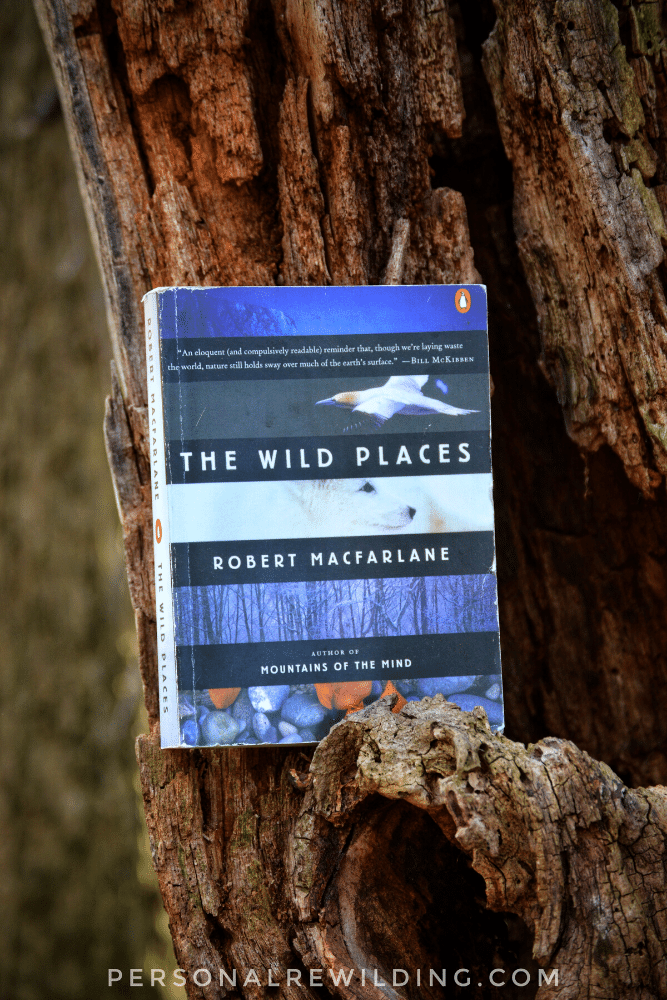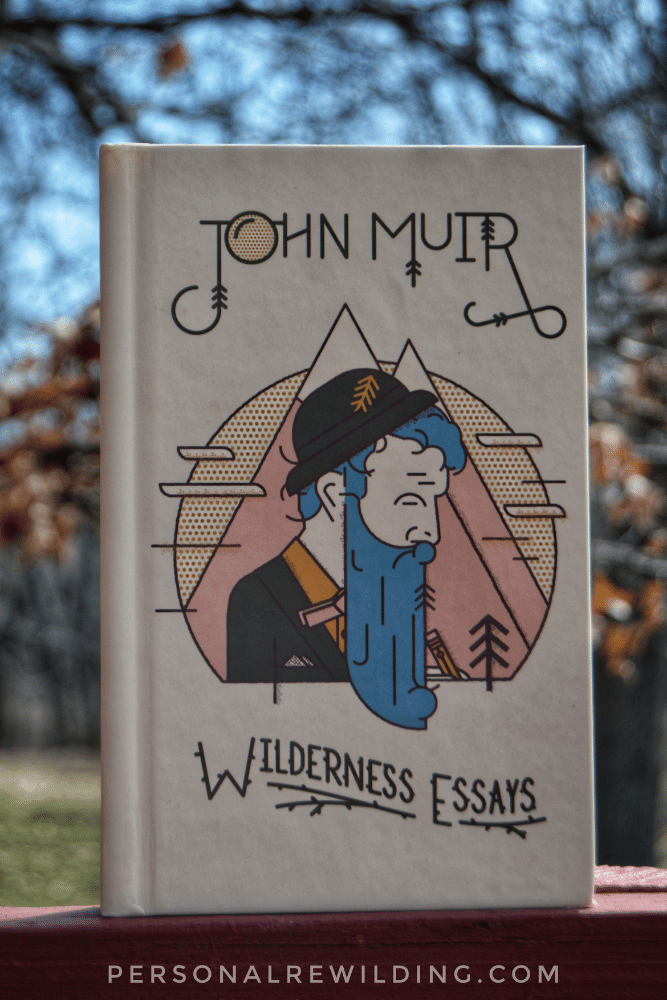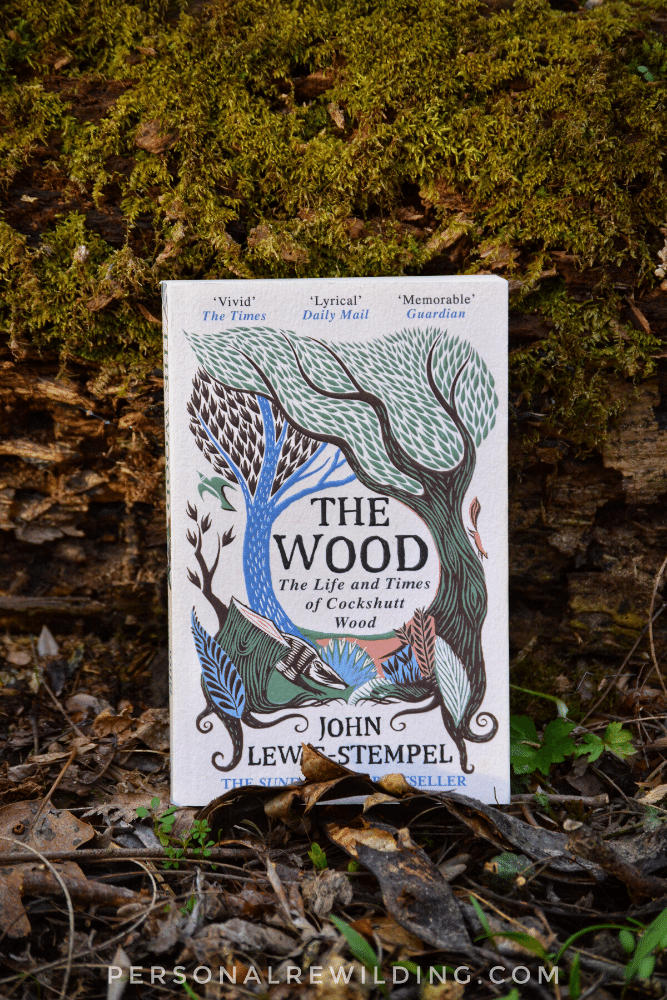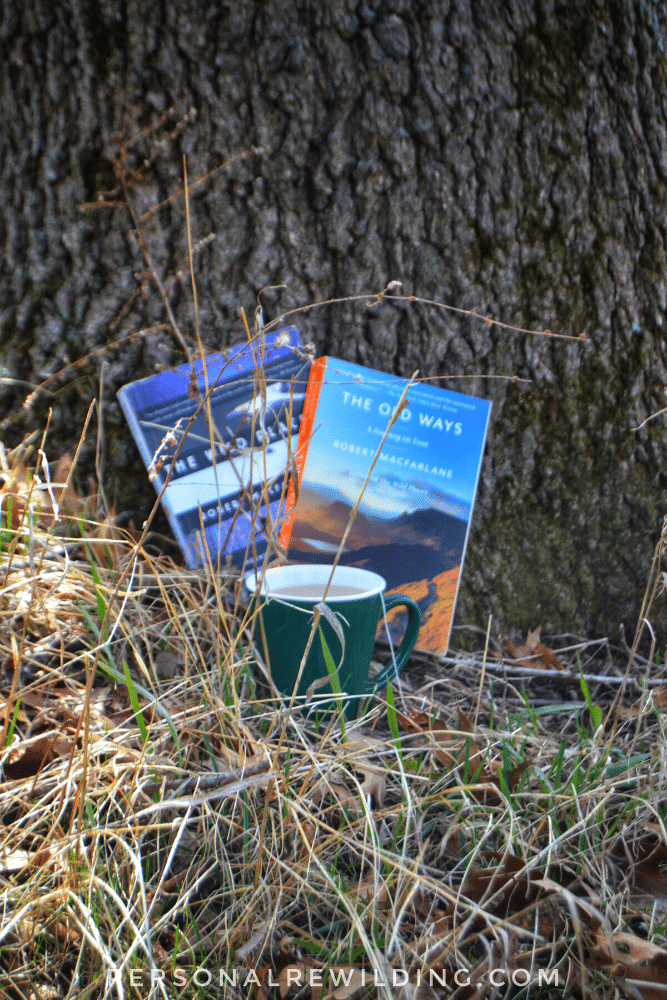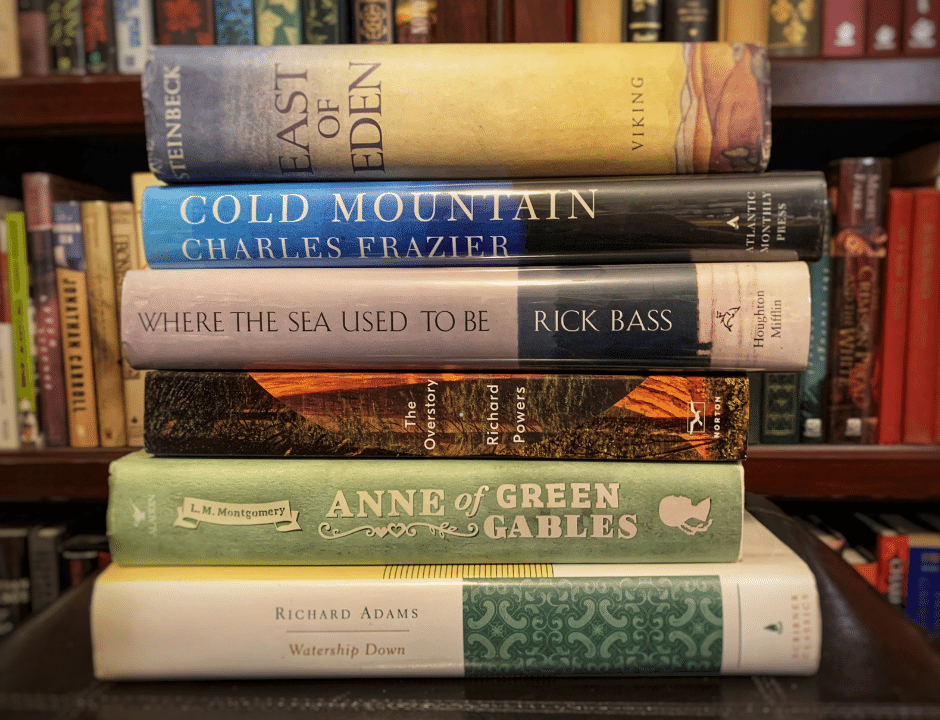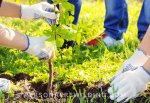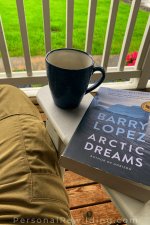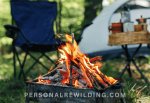- Home
- Nature Writing
Nature Writing
Reading nature writing is a way to connect with nature in any season, weather, or setting. Nature writing can take many forms – essays, narratives, poetry, journal entries, fiction, podcasts, and photographic journals, amongst others.
The only consistent thing about this genre of writing is its focus on some aspect the natural world. Some focuses specifically on exploration or adventure, some on natural history or the natural sciences. Others focus on gardening or everyday natural experiences or on conservation and ecology.
Why Read Nature Writing?
Nature writing comes in many shapes, sizes, styles, and formats, but one of its biggest benefits is in providing a path to learn, connect, and see nature in new ways. Every time we pick up a book (or listen to a podcast or audiobook), we find a new way of understanding our place in nature and the wider world. We find new methods of seeing the world around us, routes to becoming more mindful of our surroundings, ways of noticing and appreciating the details.
My favorite kinds of nature writing take me to new places – distant islands, deep into caves, across the polar ice, onto mountaintops and glaciers. It also takes me into my own back garden and shows me something I’ve never seen before.
The very best causes me to think in an entirely new way.
It teaches me about the impact of humans on the wild. I learn about the effect of trees on a landscape, or the importance of biodiversity, or the effects of climate change and habitat destruction, or even something as seemingly insignificant as the underground fungi that link tree roots together and permit a sort of communication within a forest.
Education and understanding can be a strong force for change, either personal or political. It can drive us to make lifestyle changes or become active in conservation efforts.
Nature writing permits us to experience nature – or something very like the natural world – even when physical exploration isn’t available to us. I read in the cold depths of winter, or in the evening after sunset, or on a stormy weekend, and still get the experience of flowers, mountain streams, and summer fields.
I’m also stunned into stillness almost daily by the beauty of a single line or paragraph from a book of nature writing.
"The dark night into which the year was plunging was not a sleep but an awakening, a new and necessary austerity, the sparer climate for which I longed. The shed trees were brittle and still, the creek light and cold, and my spirit was holding its breath."
-Annie Dillard, Pilgrim at Tinker Creek
"My life is here, where soon the larks will sing again, and there is a hawk above. One wishes only to go forward, deeper into the summer land, journeying from lark-song to lark-song, passing through the dark realm of the owls, the fox-holdings, the badger-shires, out into the brilliant winter dominion, the sea-bleak world of the hawks."
-J.A. Baker, The Peregrine
To make this page more user-friendly, I’ve broken up the lists and reviews up into more general groups. This is by no means an exhaustive list, as that would be impossible, but contains a selection of the nature writing available. A book may appear on more than one list. The books will show up as live links if there is a written review.
- Classic Nature Writing
- General
- Natural History
- Environmental
- Fiction
- Magazines / Ezines
Not sure where to begin? Check out our 10 best nature writing books for a short list to get you started!
Classic Nature Writing
(By Publication Date)
There are a number of acknowledged “classics” of nature writing. These aren’t always the easiest or quickest reads, but few lists of nature writing would be complete without Walden or The Voyage of the Beagle, and their content remains as relevant today as the day they were written, even if the style may feel a bit dated.
- The Natural History of Selbourne by Gilbert White (1789)
- Essays by Ralph Waldo Emerson (1836)
- The Voyage of the Beagle by Charles Darwin (1839)
- Moby Dick by Herman Melville (1851)
- Walden by Henry David Thoreau (1854)
- Call of the Wild by Jack London (1903)
- My First Summer in the Sierra by John Muir (1911)
- Sand County Almanac by Aldo Leopold (1949)
- The Goshawk by T.H. White (1951)
- Cider with Rosie by Laurie Lee (1959)
- Ring of Bright Water by Gavin Maxwell (1960)
- Silent Spring by Rachel Carson (1962)
- The Drowned World by J.G. Ballard (1962)
- The Peregrine by J.A. Baker (1967)
- The Living Mountain by Nan Shepherd (1977)
- Arctic Dreams by Barry Lopez (1986)
General Nature Writing
(Alphabetical by Author)
This is a catch-all category for most non-fiction nature writing. Books of nature writing are often divided into essays, usually around a common theme. For instance, Robert Macfarlane’s Mountains of the Mind is a set of connected essays centered around mountain hiking and mountaineering, historical and present.
Others are more narrative in style – such as J.A. Baker’s The Peregrine, which condenses several years of Baker’s obsessive observations of a local Peregrine falcon into the narrative of a single year.
Find our 10 favorite nature writing books here.
- Writing Wild: Women Poets, Ramblers, and Mavericks Who Shape How We See the Natural World, edited by Kathryn Aalto
- Desert Solitaire by Edward Abbey
- The Spell of the Sensuous by David Abram
- Walking Home: A Poet’s Journey by Simon Armitage
- A Life on Our Planet by David Attenborough
- The Peregrine by J.A. Baker
- Wake Robin by John Burroughs
- Signs and Seasons by John Burroughs
- Fifty Words for Snow by Nancy Campbell
- Waterlog: A Swimmer’s Journey Through Britain by Roger Deakin
- Wildwood: A Journey Through Trees by Roger Deakin
- Pilgrim at Tinker Creek by Annie Dillard
- Out of Africa by Isak Dinesen (Karen Blixen)
- Essays by Ralph Waldo Emerson
- Wild: An Elemental Journey by Jay Griffiths
- Dancing with Bees by Bridget Strawbridge Howard
- Findings by Kathleen Jamie
- Sightlines by Kathleen Jamie
- The Life of the Fields by Richard Jefferies
- Braiding Sweetgrass: Indigenous Wisdom, Scientific Knowledge, and the Teachings of Plants by Robin Wall Kimmerer
- Into the Wild by Jon Krakauer
- Four Hedges by Claire Leighton
- Meadowland: The Private Life of an English Field by John Lewis-Stempel
- The Wood: The Life & Times of Cockshutt Wood by John Lewis-Stempel
- The Running Hare: The Secret Life of Farmland by John Lewis-Stempel
- Sand County Almanac by Aldo Leopold
- Of Wolves and Men by Barry Lopez
- Arctic Dreams by Barry Lopez
- Crossing Open Ground by Barry Lopez
- Horizon by Barry Lopez
- The Nature Cure by Richard Mabey
- H is for Hawk by Helen Macdonald
- Vesper Flights by Helen Macdonald
- Mountains of the Mind: A History of a Fascination by Robert Macfarlane
- The Old Ways: A Journey on Foot by Robert Macfarlane
- The Wild Places by Robert Macfarlane
- Landmarks by Robert Macfarlane
- Underland: A Deep Time Journey by Robert Macfarlane
- The Lost Words by Robert Macfarlane and Jackie Morris
- Rising Ground by Philip Marsden
- Encounters with the Archdruid by John McPhee
- Coming into the Country by John McPhee
- Annals of the Former World by John McPhee
- My First Summer in the Sierra by John Muir
- Wilderness Essays by John Muir
- Upstream: Essays by Mary Oliver
- Pastoral Song: A Farmer’s Journey by James Rebanks
- The Shepherd’s Life: A People’s History of the Lake District by James Rebanks
- Entangled Life: How Fungi Make Our Worlds, Change Our Minds & Shape Our Futures by Merlin Sheldrake
- The Living Mountain by Nan Shepherd
- Wanderlust: A History of Walking by Rebecca Solnit
- A Field Guide to Getting Lost by Rebecca Solnit
- Walden by Henry David Thoreau
- Wilding by Isabella Tree
- The Nature Fix: Why Nature Makes us Happier, Healthier, and More Creative by Florence Williams
- When Women Were Birds: Fifty-Four Variations on Voice by Terry Tempest Williams
- The Salt Path by Raynor Winn
- The Hidden Life of Trees by Peter Wohlleben
Natural History
(Alphabetical by Author)
Natural history is the scientific study of plants or animals, primarily through observation rather than experimentation.
- The Birds of America by John James Audubon
- The Voyage of the Beagle by Charles Darwin
- Life: A Natural History of the First Four Billion Years of Life of Earth by Richard Fortey
- Gathering Moss: A Natural and Cultural History of Mosses by Robin Wall Kimmerer
- Sand County Almanac by Aldo Leopold
- Of Wolves and Men by Barry Lopez
- The Collector: David Douglas and the Natural History of the Northwest by Jack Nisbet
- Entangled Life: How Fungi Make Our Worlds, Change Our Minds & Shape Our Futures by Merlin Sheldrake
- The Natural History of Selbourne by Gilbert White
- The Hidden Life of Trees by Peter Wohlleben
- The Secret Wisdom of Nature by Peter Wohlleben
Environmental
(Alphabetical By Author)
- Wild Hope by Andrew Balmford
- A Wild Idea by Jonathan Franklin
- Field Notes from a Catastrophe: Man, Nature, & Climate Change by Elizabeth Kolbert
- How to Give Up Plastic by Joel McCallum
- Losing Earth: A Recent History by Nathaniel Rich
- Wilding by Isabella Tree
- Go Gently by Bonnie Wright
Fiction
(Alphabetical by Author)
Fiction is rarely “nature writing” in its strictest sense, but many novels and short stories are largely naturalistic. In each of these books and stories, wild nature plays a central role.
In many of these, humans strive with or against wild nature. Robinson Crusoe is shipwrecked and battles with his own isolation as well as with the elements. Ishmael joins a whaling boat on a hunt for the white whale Moby Dick and finds that man’s burning desire to subdue the wild has limits.
In others, wild nature is at the center of the plot. Richard Powers’ The Overstory is a narrative about forests and trees with a set of linked and overlapping stories, like the growth-rings of a tree. In Mythago Wood, Robert Holdstock’s characters travel into a mythic British woodland much larger on the inside than the outside.
- Watership Down by Richard Adams
- Where the Sea Used to Be by Rick Bass
- Brendon Chase by B.B. (Denys Watkins-Pitchford)
- The Secret Garden by Frances Hodgson Burnett
- My Antonia by Willa Cather
- The Orchardist by Amanda Coplin
- Wuthering Heights by Emily Bronte
- Robinson Crusoe by Daniel Defoe
- Cold Mountain by Charles Frazier
- The Lightkeepers by Abby Geni
- The Wind in the Willows by Kenneth Grahame
- Far From the Madding Crowd by Thomas Hardy
- The Old Man and the Sea by Ernest Hemingway
- Mythago Wood by Robert Holdstock
- The Snow Child by Eowyn Ivey
- To the Bright Edge of the World by Eowyn Ivey
- On the Road by Jack Kerouac
- Sea Hearts (Alternate Title: The Brides of Rollrock Island) by Margo Lanagan
- Winter Count by Barry Lopez
- Call of the Wild by Jack London
- White Fang by Jack London
- Moby Dick by Herman Melville
- Anne of Green Gables by L.M. Montgomery
- Where the Crawdads Sing by Delia Owens
- The Overstory by Richard Powers
- Bewilderment by Richard Powers
- The Grapes of Wrath by John Steinbeck
- East of Eden by John Steinbeck
- Little House in the Big Woods by Laura Ingalls Wilder
- Butcher’s Crossing by John Williams
Magazines / Podcasts
Magazines and podcasts are a unique way to experience nature writing. Magazines offer a variety of different articles, themes, and photography, often side-by-side.
Podcasts can be lectures, conversations, spoken stories, or articles that address naturalistic topics, often including guest speakers, authors, or scientists.
- Anthropocene (Magazine)
- Cultivating Place (Podcast)
- Emergence Magazine (Magazine and Podcasts)
- For the Wild: An Anthology for the Anthropocene (Podcast)
- National Geographic (Magazine)
Share your favorite Nature Writing!
Do you have a favorite book of nature writing that you'd like to share with our visitors? Write a review or tell us a bit about your experience and what makes a book special or important!
